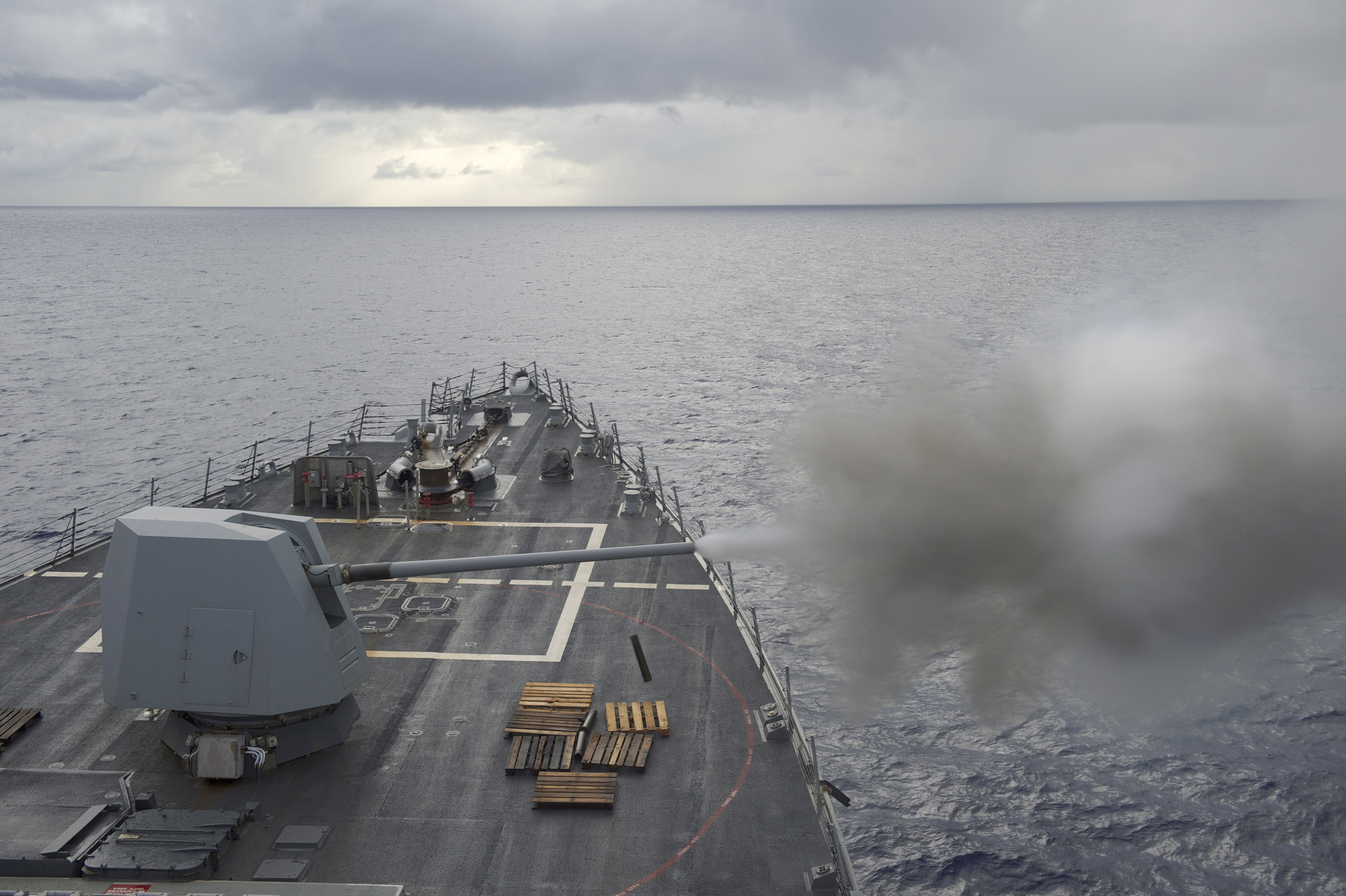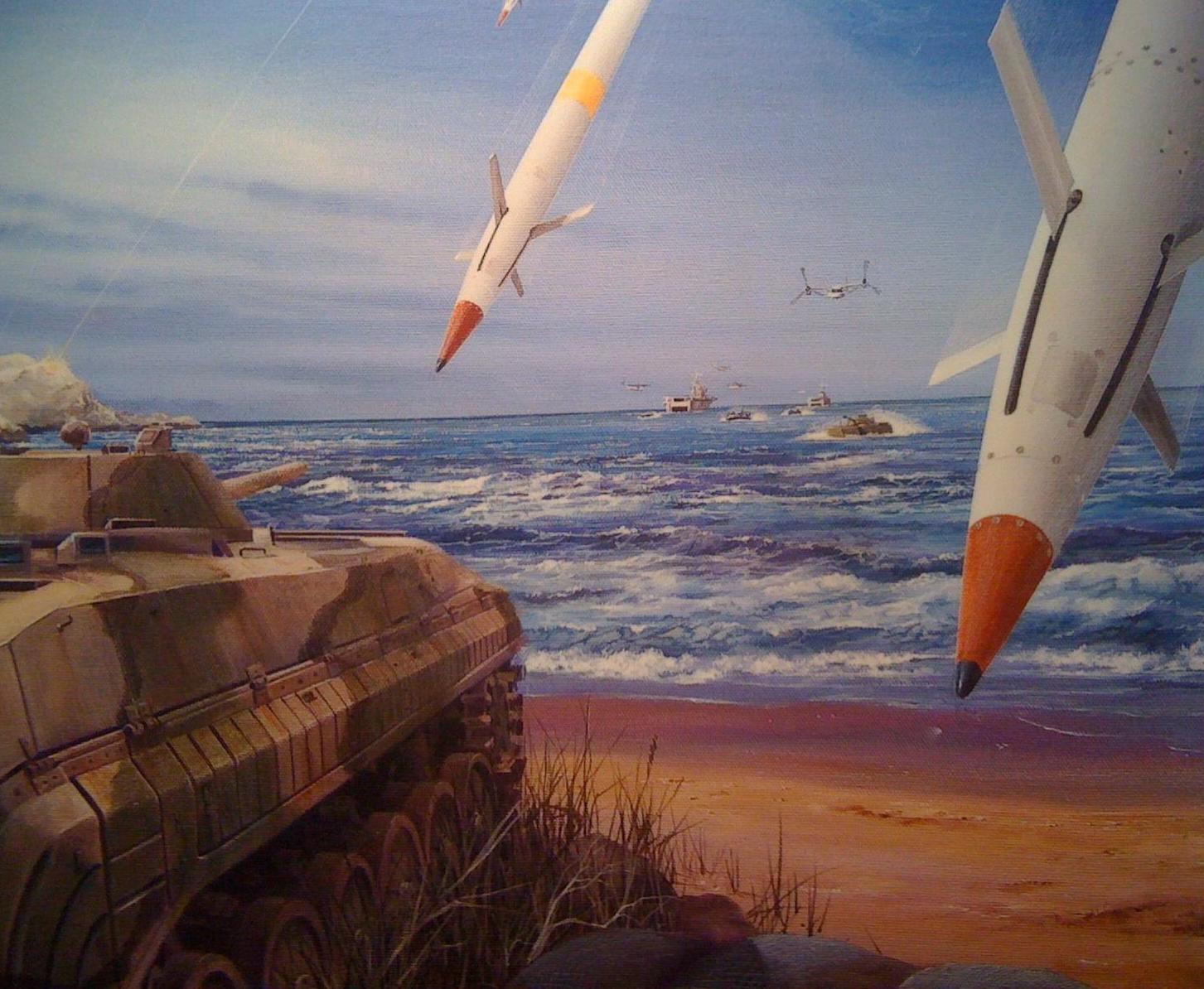
This post was updated from an earlier version to include a statement from Raytheon.
The Navy’s surface warfare community is taking a second look at a guided shell that could be fired from existing ship board guns as part of the service’s recent focus on expanding the combat power of the Navy’s surface ships, USNI News has learned.In May, Naval Sea Systems Command (NAVSEA) issued a request for information (RFI) for companies to submit information for a guided round that can be fired from the service’s Mk 45 five-inch guns found on the service’s guided missile destroyers and cruisers.
The RFI is looking for a maximum 61-inch round that would supplement, “Naval Surface Fire Support (NSFS) / Land Attack missions, and increase capabilities for Anti-Surface Warfare (ASuW), including against Fast Attack Craft (FAC) and Fast In-Shore Attack Craft (FIAC),” according to the document.
Naval Sea Systems Command was quick to say that the RFI was no means a restart to look for a guided round.
“RFIs are not the same as [request for proposals], and while the former can potentially lead to the latter it is too early to make this conclusion,” according to a Monday statement from NAVSEA provided to USNI News.
“We are curious to see what’s out there and RFIs keep us up to date with the latest in technology so if we need to make a decision on capability, we’ve researched available options.”
The examination of a five-inch guided round follows the mostly successful development of BAE Systems 155 mm Long-Range Land Attack Projectile (LRLAP) for the advanced gun system on the Zumwalt-class destroyers (DDG-1000).

“When we’re developing the technology for the 155mm (six inch), the question I asked the team was ‘If it’s good for a six-inch mount, is it good for a five inch mount?’ I think the answer to that is going to be yes,” Rear Adm. Thomas Rowden, director of surface warfare (N96) for the Office of the Chief of Naval Operations (OPNAV) told USNI News in a Jan. 9 interview.
“If we can do it cost effectively, then we’d be foolish not to extend the range of those weapons to about five times of what we’re getting now.”
The new RFI comes six years after the failed development of Raytheon’s five-inch Extended Range Guided Munition (ERGM). The program was canceled in 2008 after a tortured 14-year development program.
BAE Systems told USNI News it planned to submit its internally developed Multi Service – Standard Guided Projectile (MS-SGP) in response to the RFI.
“When fired from a Mk 45 Mod 4, our MS-SGP will deliver fires to stationary or moving targets out to 54 nautical miles,” said Tom Pfenning, BAE Systems, Director – Munitions Programs in a Friday statement to USNI News.
Raytheon also submitted information on on its Excalibur guided projectile, a company spokeswoman told USNI News on June 4, following an earlier version of this post.
“Raytheon has submitted a response to the U.S. Navy’s RFI for extended range guided projectile,” read the statement.
“Raytheon has demonstrated the ability to develop and produce an affordable, reliable guided projectile for the U.S. Army with Excalibur Ia and Ib that consistently meets and exceeds warfighter requirements.”
Italian firm Oto Melara is also reported to be submitting its 127 mm Vulcano guided long-range projectile, according to a report in Jane’s Defence Weekly. Responses to the RFI are due to NAVSEA by Wednesday.





